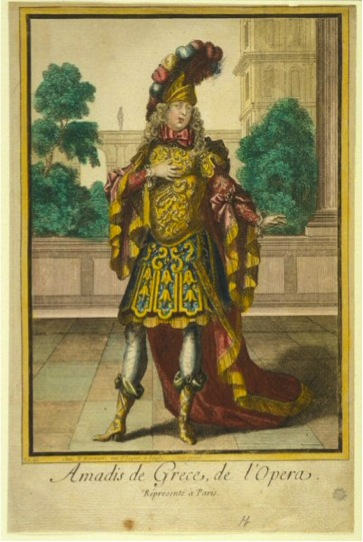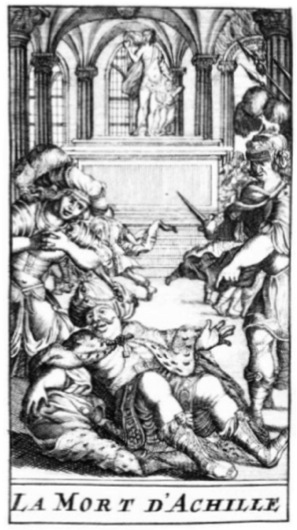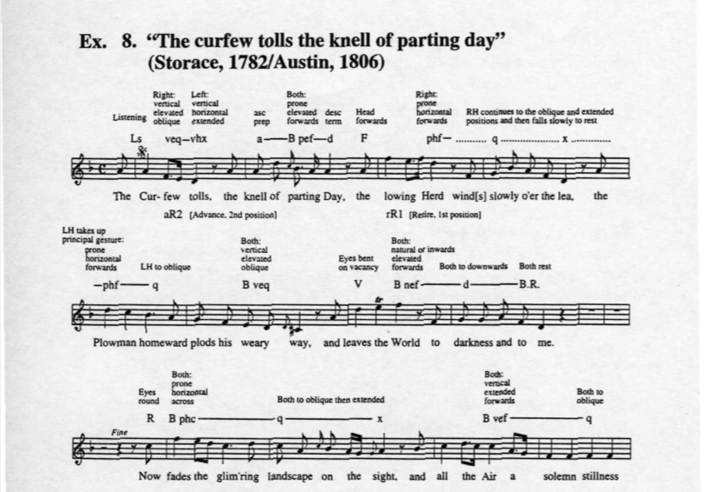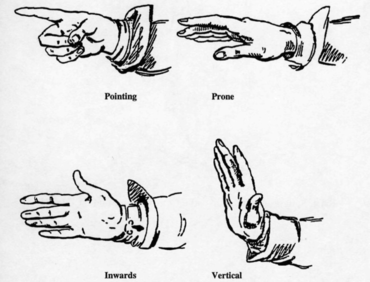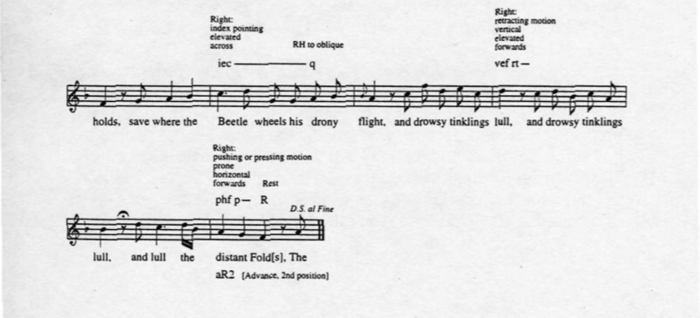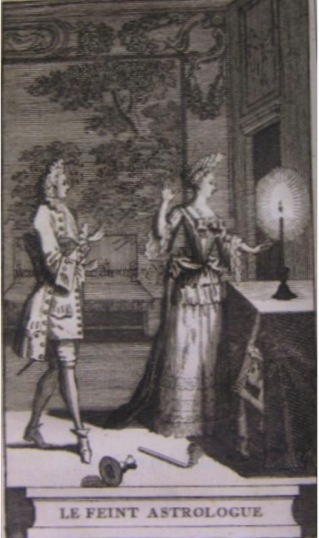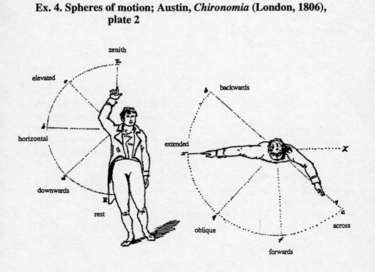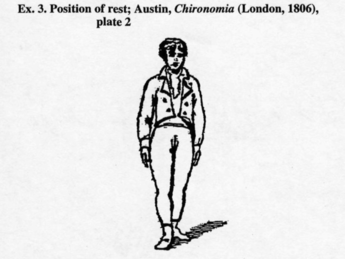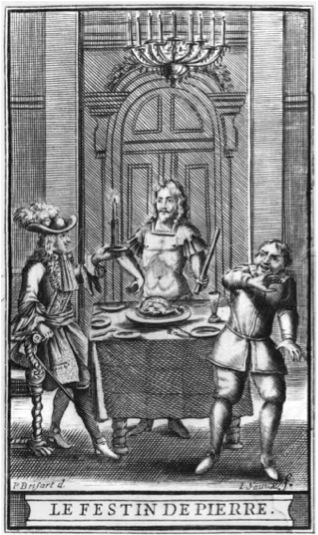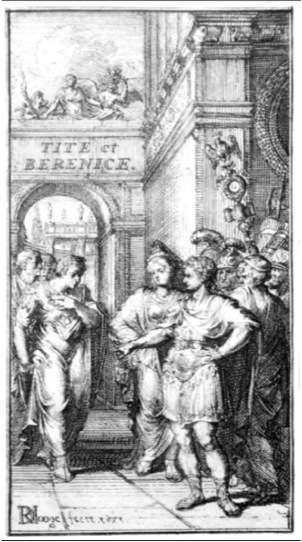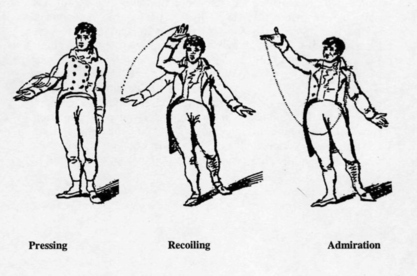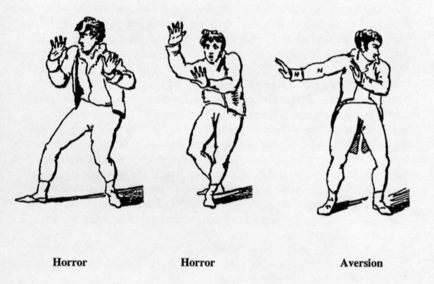Above the staff Austin notated the symbols for the movements of the arms and hand an their belonging expression.
Below the staff he wrote down the movements of the feet and their positions.
3. Gestures suitable for my method
3.1 The history of gesture: Its evolvement and use in the baroque and classical music period
The effects and use of gestures in singing have been explored for decades. In the field of playwriting, gesticulation is mainly found in the operatic 17th century Baroque, and 18th and 19th century classical music. The use of gestures was (and still is nowadays) a frequently discussed and used topic in the field of rhetoric in these centuries. In the 17th century in France, gesticulation was a fundamental part of a scholar’s competences, and was necessary to becoming a lawyer, diplomat, priest, playwright or actor. Teaching institutions (often Jesuit colleges) divided the concept of rhetoric in five parts: inventio (creativeness), dispositio (arrangement), memoria (memory), eluctio (style or diction) and actio (using body movements, such as gestures). It was common for these institutions to have students perform a play in Latin accompanied by music and ballet by the end of the year. These public performances aimed to help the students to train and display their rhetorical skills before starting a career in one of the above professions, where these skills were needed. In French Baroque opera, the use of ‘actio’ served as a tool to enhance one’s expressiveness on stage, clarifying and enlarging the emotional state of the character. César-Pierre Richelet (1626 - 1698) describes the definition of gesture in his dictionary as: “movement of the hand confirming to things one says” [2]. It’s interesting to note that the word ‘hand’ is used in singular and not in plural form. French academics believed that the right hand was primarily involved in gesturing. Although in some descriptions, like this one from Bretteville, the left hand seems to be involved as well:
“The movement of the right hand must suit the nature of the actions of which one speaks. For example, one must say “attract” while drawing the hand into itself; “repel” while pushing the hand away; “tear away” while separating the hands; “unite” while joining them together; “open” while opening them; “tighten” while clasping them together; “to raise” while raising them; “to lower” while lowering them, etc. . . .” [2]
In addition, there was consensus among French academics that the imaginary frame, in which gestures could be made, should not extend its size by going lower than the stomach or higher than the eyes, as exemplified by the actor Jean Poisson
“To raise the hands higher than the head, to strike fists together or one hand inside the other, to put the two fists on one's sides, to point with fingers, to spread them apart, to stretch out and cross the arms, to gesture too much, to gesture with regular action (which is called to gesticulate), and to gesture first with one hand then the other alternatively—these are all vicious gestures which will not be put up with on the tragic stage, and which can be suitable only to comedy, and which, consequently, cannot be accepted in a serious orator.” [2]
I personally do not agree with the assumption that gesturing above the eyes and below the stomach is inappropriate for stage situations except for comedies today. Of course, gestures should be coherent with what one says, but I believe it depends on the character’s personal nature what fits to his style of communication.
John S. Powell mentions in his research that by observing the frontispieces of printed plays (by for instance Molière and Thomas Corneille) we can get an accurate image of the typical stage gestures that appeared in those days [3]. These pictures depict a descriptive dramatic moment in the play, in which it seems like the action is frozen in time. The pictures served as an informative description of what the storyline of a scene would look like. These snapshots needed to convey the right atmospheric setting only through the right hand and/or arm position, body posture and facial expression. Therefore, it is conceivable to assume that these sketches or ‘paintings’ were created with the utmost care, so that the audience would get a glimpse of the right impression of the piece or scene. Knowing this, I would like to remark that the portraiture of significant gestures on frontispieces also could be seen as an exaggeration of gestures used on stage (because of its extreme accuracy). Assuming this to be true, gestures probably were created in a slightly more natural way during real life performances. I added some of the most common gestures I found iconic just to give an overall impression (see images 1- 6)
In Italian Baroque opera, the counterpart of the French baroque, cultivation of gesturing was minimal. Critics, French as well as Italian, often mentioned that the dramatic integrity of a piece was affected by the fact that singers were not really acting or portraying the character and were only displaying their vocal techniques. These critical opinions were mainly expressed towards the castrati whose outward appearance in particular raised questions, because of the contradiction between body and voice. Whether these assumptions are justified is difficult to determine. However, it seems that the castrati's personal characters on stage were considered as more problematic than their vocal abilities, which were often praised and admired [2].
Regarding the 18th and 19th century, the findings of Gilbert Austin (1753-1837) in his book on Cheronomia* (1806) provide a clear overview of how gestures should be used in a correct way to improve verbal persuasion. Despite the fact that theatrical singers employ a more passionate or stronger form of action, he is nonetheless convinced that both oratorical and theatrical singers move their audiences by using a common set of gestures. In singing, action encloses all the movements we can observe in the body. This also includes the position of the feet. In those days it was suggested that singers should place their bodyweight on one leg, allowing the other limb to stay relaxed so that it was prepared for an immediate change to occur. This caused a continuous movement in which the bodyweight shifted from one leg to the other. Furthermore, Austin stated that the hands and arms are making motions in a vertical and horizontal direction (see exposition 4) from the position of rest (see exposition 3). These motions are created with common hand positions (see exposition 5). The raised hand(s) performs the principal gesture, whereas the retired hand(s) performs a replica of this gesture with much less energy (see exposition 6). Whether one or both arms are raised, expressing the intensity of a gesture depends on how strong the emotion is. Transitions of hand gestures should be created with ease and simplicity and not contain any form of rigidness. Also, the motions should be appropriate for the right emotional atmosphere, which means that e.g. sudden movements are only appropriate when the intensity of the emotion asks for a rapid expression. Horror and aversion are emotions for which this rapid change of motion could be of use to amplify their urgent message (see exposition 7). The audience expected differing gestures from the singer. The gesture should be slightly different than the one(s) previously made when repetitions of words occurred. Austin described these hand gestures, positions of feet and even correct facial expressions into four texts, of which have I added one (see exposition 8), serving as an example of his system. Until today there are individuals who claim that a gesture has to be found which corresponds with the emotional message that is conveyed. [4][14]
As I stated earlier, the embodiment of gestures in the process of learning a new piece helps me to create a stronger physical connection with the text, which should diminish and ideally eradicate my meaningless gestures. Although the idea of practising gestures, like they did in former times, intrigues me, I am not in favour of the idea of making universal agreements on gesture use in singing. In my opinion all these pre-fixed gestures are too static, impersonal and too universal. Every person has a different way of expressing themself. There are various ways of gesticulating, ranging from wide to subtle movements, or none at all. Although humans arguably use the same type of gestures during speech its expression can take many shapes or forms when we communicate [5]. I believe if we would impose a clearly defined idea on singers of what specific universal gestures should be used for a corresponding type of emotion, the spontaneous facial and bodily expressions or sincere connection with the meaning of the text will fade to the ‘background’. For my own method I thus sought a way to incorporate the aspects of ‘freedom’, ‘spontaneity’ and ‘authenticity’ as much as I could in order to avoid losing a singer’s individual expressiveness.
David McNeill, a researche psychologist mainly specialised in psycholinguistics, states in his research “Hand and Mind: What Gestures Reveal about Thought" (1992) that there’s no such thing as ‘body language’. Gesticulations aren’t seen as a ‘language’ on their own, but they are created to complement speech. Both aspects belong to each other [5]. He also states in this same research that a division in types of gestures could be made [5][6]. He divided them into four types of co-speech gestures named: iconic, metaphorical, deictic and beat gestures [5][7].
- Iconic (or representational) gestures (McNeill 1985) are hand gestures that “represent meaning that is closely related to the semantic content of the segments of speech that they accompany”. An example used by McNeill is: “‘And she [chases him out again]’ [hand appears to swing an object through the air]” [8] You can also think about how you would gesturally describe a wide river or a tall person [b]
- Metaphorical gestures are created when “people use physical space to represent abstract ideas that have no spatial instantiation in the world (e.g., gesturing upward to indicate high intelligence)” [9].They’re helping by giving concreteness to an abstract idea e.g. making a shape of a heart on your chest with your hands can indicate the abstract words ‘love’ or ‘affection’ [b].
- Deictic gestures are meant to “direct attention through their handshape, which consists of one or more fingers extended in the direction of a concrete or abstract entity (e.g., pointing to the wrist, where a watch is worn, to indicate the time) [7]. They are also named pointing gestures. Another example could be: ‘when you’re talking to your neighbour about someone across the room and might point at the addressed person to strengthen the attention of your interlocutor or to be clear in your correspondence’ [b].
- Beat gestures of which the name already reveals the reason of its use. “They are simple rhythmic movements reflecting speech prosody or emphasis (e.g., finger taps produced on stressed syllables of an utterance)” [7].They are not carrying any semantic content whatsoever. Think about great world leaders who give speeches and emphasise rhythmically with their fingers and hands words by laying emphasis on them (e.g. Bill Clinton, who was always wagging his thumb during his speeches) [b].
Iconic and metaphorical gestures are both part of another group named ‘representational gestures’, because they share a common ground with regards to how and why they’re used. Representational gestures are referring to persons, locations, objects or events and can be created by body or hand movements and facial expressions [c]. In other words, they “depict attributes of meaning through their handshape or articulation” [7].
The following overview provides a clarification of different types of hand and arm movements:
|
Categories of Movements |
|
Gesticulations |
|
Language-like movements |
|
Pantomimes |
|
Emblems |
|
Sign language |
These five groups can furthermore be differentiated due to their ‘spontaneous’ or ‘non-spontaneous’ character. In my perception, pantomimes, emblems and sign language belong to the category of non-spontaneous. People can teach themselves sign-language as well as they can teach themselves the craft of pantomiming. These are in my opinion conscious ways of learning certain physical movements to communicate and express oneself.
Gesticulations on the other hand seem to have a more spontaneous character, because they accompany our words often beyond our conscious control [5]. Information about ‘language-like-movements’ appears to be only sparsely available. However, because of its resemblance with gesticulations I assume they will rather have a more spontaneous than a non-spontaneous character.
In conclusion, if I want to create gestures in my singing which look similar to those in my speaking, they thus should have a spontaneous character in order to be perceived as credible. This also supports my previous opinion that universal or fixed gestures are not of use for my method.
What struck me after concluding this, was that ‘singing with the same physical involvement as in speaking’ and ‘creating spontaneous gestures’ are actually in alignment with each other. In our speech we are not thinking about what our arms and hands are doing. In a split second they can move in accordance to what we think and say. This gives them automatically their spontaneous character, because they are created in the moment and not thought-out in advance. Thus, spontaneous gestures emerge automatically when your physical involvement in singing is the same as in your speech.
3.2. The character of my gestures
As mentioned earlier in section 1.1.1 it is advantageous for a singer to be as physically involved in their singing as in their speech in order to act credibly. This made me realise that the gestures I seek to incorporate in my method can only be authentic if they look similar to the ones I use in my daily speech. Therefore, I started reading scientific papers regarding ‘gesture and speech’. My methodology is thus also based on the findings and conclusions of these articles.
In neuroscience and psychology, it has been found that the movements of our hands and arms can be divided into the following categories: gesticulations (movements of the hands and arms which are idiosyncratic and spontaneous, i.e. individual, and made during speech), language-like gestures (these are more grammatically integrated than gesticulations in their expression), pantomimes (movements without speech used in theatre for telling a story), emblems (e.g. used for praise or insults) and sign language (e.g. the communicative linguistic system for deaf people, which is used in the absence of phonated speech). Gesticulations are for humans, on a daily basis, the most frequently used types of gesture. Although the hands and arms are mostly involved, nothing impedes the participation of other body parts. Use of the head, legs and feet is also common especially when the hands and arms are immobilized [5]. However, for my research I only focus on the movements of the hands and arms. Speakers of various cultural backgrounds produce these movements, usually manually, although they vary in their typology and extent. For most manual movements, speech is often associated with their production. On a frequent bases, speakers form symbols with their hands which represent the words coming from their mouth. On the other hand, emblems, pantomimes and the gestures used in sign language are mostly produced in the absence of words [15].
